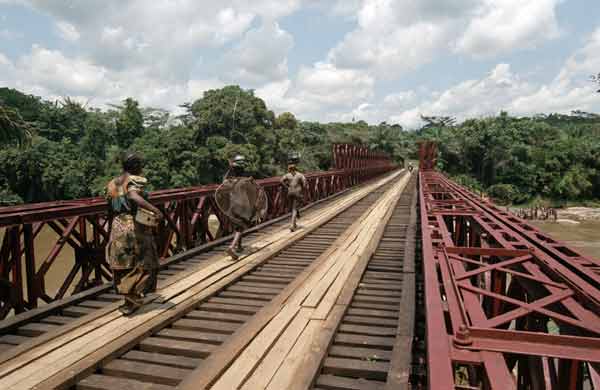On 5 February 1997, AFDL/APR units killed 500 refugees at the metal bridge over the Ulindi River at Shabunda, nine kilometres from Shabunda-Centre. Most of the victims were refugees who had fled the Kabakita I, II and III camps when the soldiers approached. After the massacre, villagers were made to dump the bodies in the river and clean the bridge. The soldiers forcefully led away the survivors in the direction of Kabatika and executed them the following day.

These were refugee survivors of the Uvira and Bukavu camps who had tried to escape via the Shabunda territory. These refugees had taken the old Bukavu to Kindu road, passing through the villages of Chimanga, Kingulube, Katshungu and Shabunda, 71, 181, 285 and 337 kilometres east of Bukavu respectively.
After two weeks of walking in the forest following an old road which had become only a path, we were the first refugees to reach SHABUNDA located more or less 400 km west of BUKAVU. In SHABUNDA at KINGURUBE level, the Zairian soldiers arrested and stripped us of our property and made us their human shields to run from the first shot of the AFDL rebel.
All the refugees who had advanced more than 200 km from Kingurube were forcibly returned to SHABUNDA. They were installed in three camps (Kabakita I, II and III) including one for Burundian refugees along the ULINDI river opposite the town of SHABUNDA. This river has an old metal bridge more or less 100 m long, which is moving because it has lost all the bolts. The FAZ soldiers were on the other side of this bridge to prevent refugees from crossing into and entering the city.
For two months, more than 70,000 refugees who had been counted were starving while waiting for help from UNHCR, WFP and the ICRC, as supplies were never in sufficient quantity to be distributed.
On February 5, 1997, part of the enemy [Rwandan Patriotic Army of the RPF] surrounded the refugees from behind to force them all to throw themselves into the river and another attacked in front in the town of SHABUNDA to position themselves along the same river. Note that there are only two exit routes there which are the road which gives directly to the river which must be crossed by canoes which the authorities have blocked on the side of SHABUNDA and the road which leads directly to the bridge which was already guarded by the FAZ.
On both sides of the road, it is the equatorial forest formed by bushes of thorns entangled with large trees sheltering large snakes. At 5.00 am on February 5, 1997 an enemy bomb exploded in the center of the refugee camp. The only way is the road. If we go back we go towards the enemy and the canoes are blocked on the other side. You only have to move towards the bridge. At the exit of the bridge, the enemy settled on a road which comes from the city. The bombs fall, we see the pieces of body jump in the air. The refugees rush each other into the water and others onto the bridge. Many pass between the metal planks and fall into the water. At this point, those who are hit by bullets or fall into the water have had their chance of no longer suffering, it is said. The bombing lasted more than four hours, after it was sporadic and spaced fire. We cannot exactly quantify the people who were victims of these bombings but it is beyond 1000 people.
Around mid-December 1996, 38,000 refugees were registered in three makeshift camps around Shabunda: Makese I, Makese II and Kabakita (also known as Kabakita I, Kabakita II and Kabakita III). An unknown number of these refugees, often those falling behind, were killed by the AFDL/APR (Alliance of Democratic Forces for the Liberation of Congo / Rwandan Patriotic Army) soldiers on the Shabunda road.
“… Then they turned back and began to burn the camp. All the refugees who remained – the old, women, children and the feeble – were killed and burnt. If you go into the bush, you find bones. Some of the bodies were dropped in the latrines.”
The hidden massacre , The Guardian, First published on Sun 2 Sep 2007 16.52 BST
After the Ulindi bridge attack, the refugees who managed to escape the killing in time headed in the direction of Kindu. Others, after hearing that UNHCR had opened a branch at Kigulube, headed towards Bukavu. Several thousand refugees went this way, moving through the forest in small groups of 50 to 100 people. Since January 1997, AFDL/APR soldiers had controlled the zone and had set up many checkpoints along the major routes, killing more refugees.
OHCHR, 2010. Report Of The Mapping Exercise Documenting The Most Serious Violations Of Human Rights And International Humanitarian Law Committed Within The Territory Of The Democratic Republic Of The Congo Between March 1993 And June 2003, Geneva: Office of the United Nations High Commissioner for Human Rights, p.92 (Web Version)
